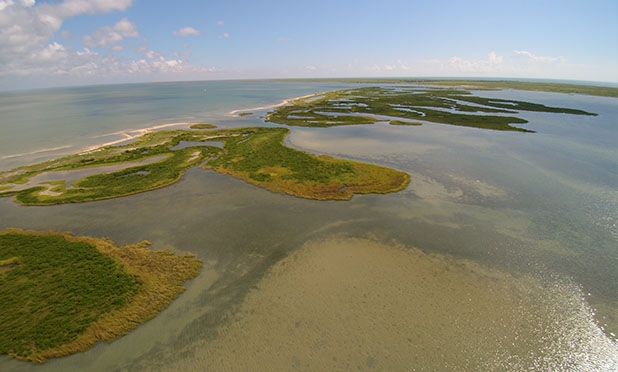Science stops for no hurricane. Several faculty at The University of Texas Marine Science Institute have been working in overdrive since the category four Hurricane Harvey slammed the Gulf Coast. Despite being displaced from their homes, relocated to temporary laboratories and offices, science continued to be at the forefront of their minds. Quickly after the hurricane made landfall, the National Science Foundation issued a call to scientists to study the effects of the storm on the environment.

Four faculty at The University of Texas Marine Science Institute were just awarded a combined $356,785 for two projects that will study the impact of the hurricane on our state’s seagrass meadows and the biogeochemistry of the local bays.
Hurricane Harvey brought with it very high winds and large storm surge that had the potential to re-shape the seagrass meadows. “We hope to gain a holistic understanding of the hurricane’s impacts,” said Assistant Professor Dr. Lauren Yeager. “We’ll be working to, not just figure out how much seagrass was lost, but also tease apart how different aspects of the storm changed how these seagrass meadows function.” Dr. Yeager will be joined by veteran seagrass biologist Dr. Ken Dunton to also investigate what factors help seagrass rebound quickly after such a massive disturbance.
With winds reaching as high as 150 miles per hour, the hurricane cut new water passes and moved an untold amount of sand and mud throughout the bays. This movement of sediment, combined with heavy flash floods directly impacts the biogeochemical processes including the amount of nutrients in the bays. UTMSI chemists, Drs. Amber Hardison and Zhanfei Liu, will be putting their grant to work by trying to understand how Hurricane Harvey changed the water and sediment biogeochemistry in the Mission and Aransas Bays, which weathered the eye of the storm. “With a of storm of this magnitude, the bays will not function like we are accustomed to,” said Dr. Zhanfei Liu. “They received such a tremendous amount of nutrients, and we’re interested to see how the bays will respond in the short-term and the long-term. We could see more algal blooms in the future, but we won’t know until we get out on the water.”
The effects that Hurricane Harvey inflicted on the local bays and estuaries may last for months and it may take many years for them to recover. The researchers’ personal recovery will happen concurrently. They’re likely to be juggling sampling trips on the bays with contractor meetings to install new drywall or roofs in their homes. “Science doesn’t stop for hurricanes,” Dr. Hardison says with a smile. “On the bright side, this new research will be a welcome distraction from dealing with the damage to our home and our colleagues’ houses.” The scientists are the epitome of resilience. Their research will soon learn if the local seagrass meadows and bays have their own form of resilience.









